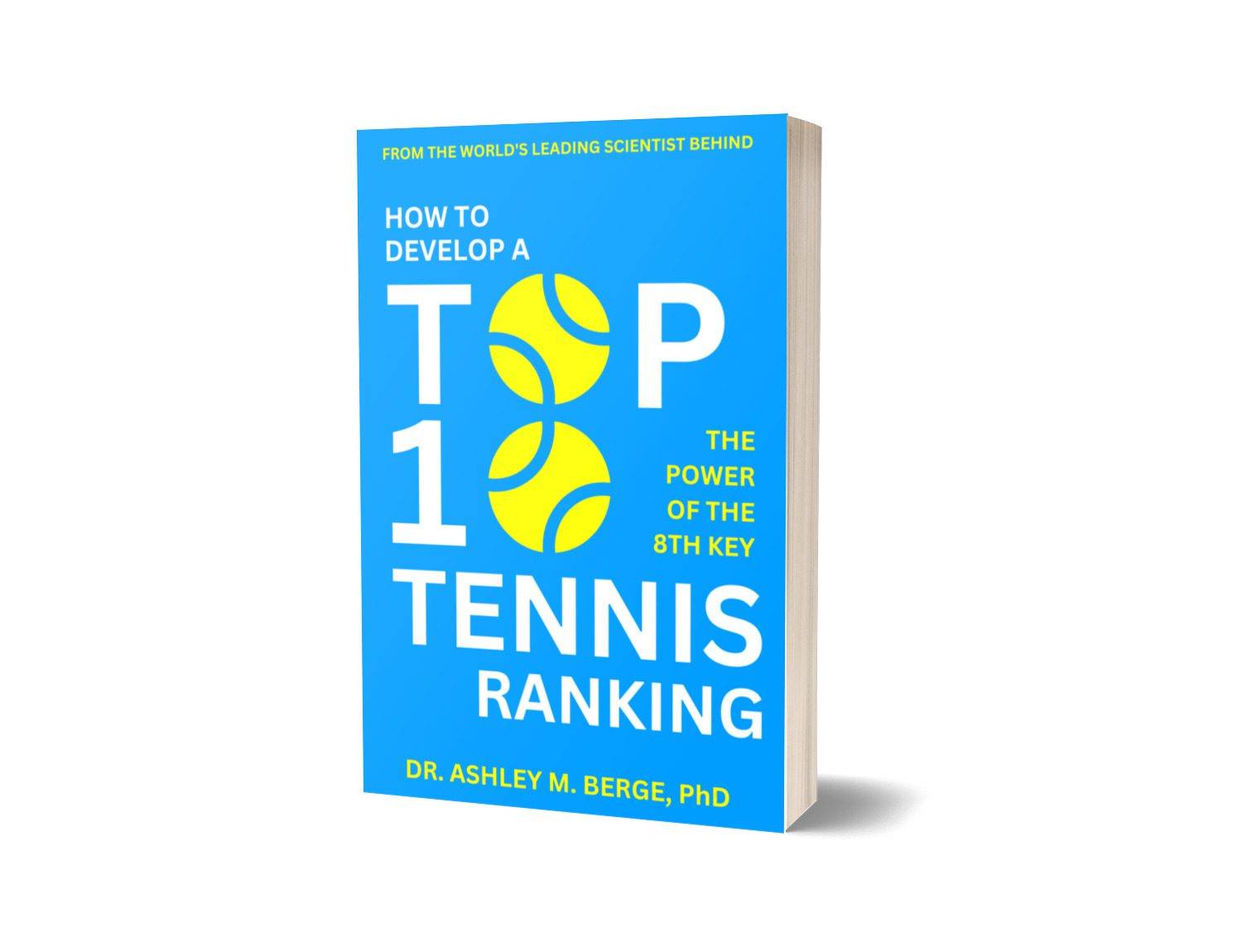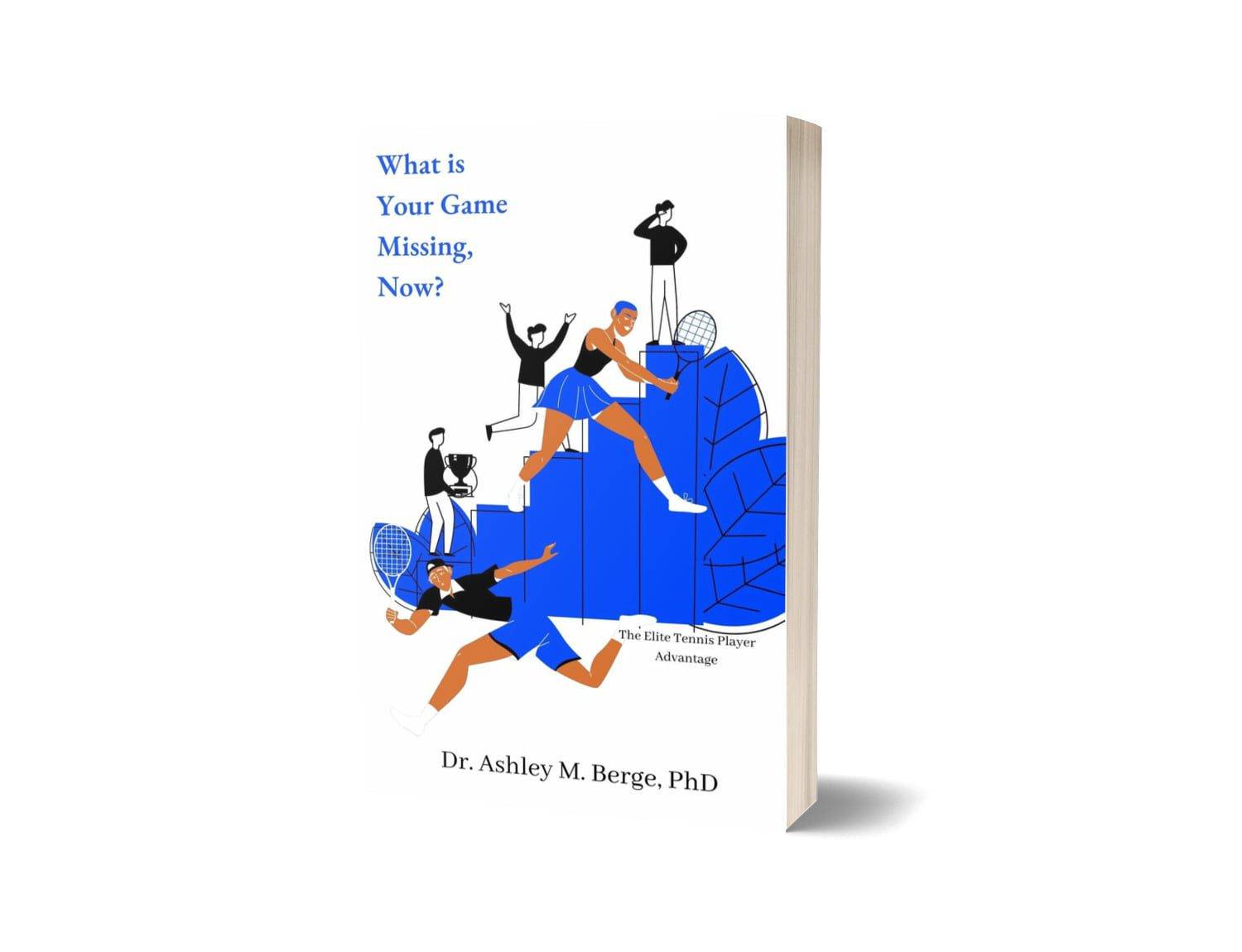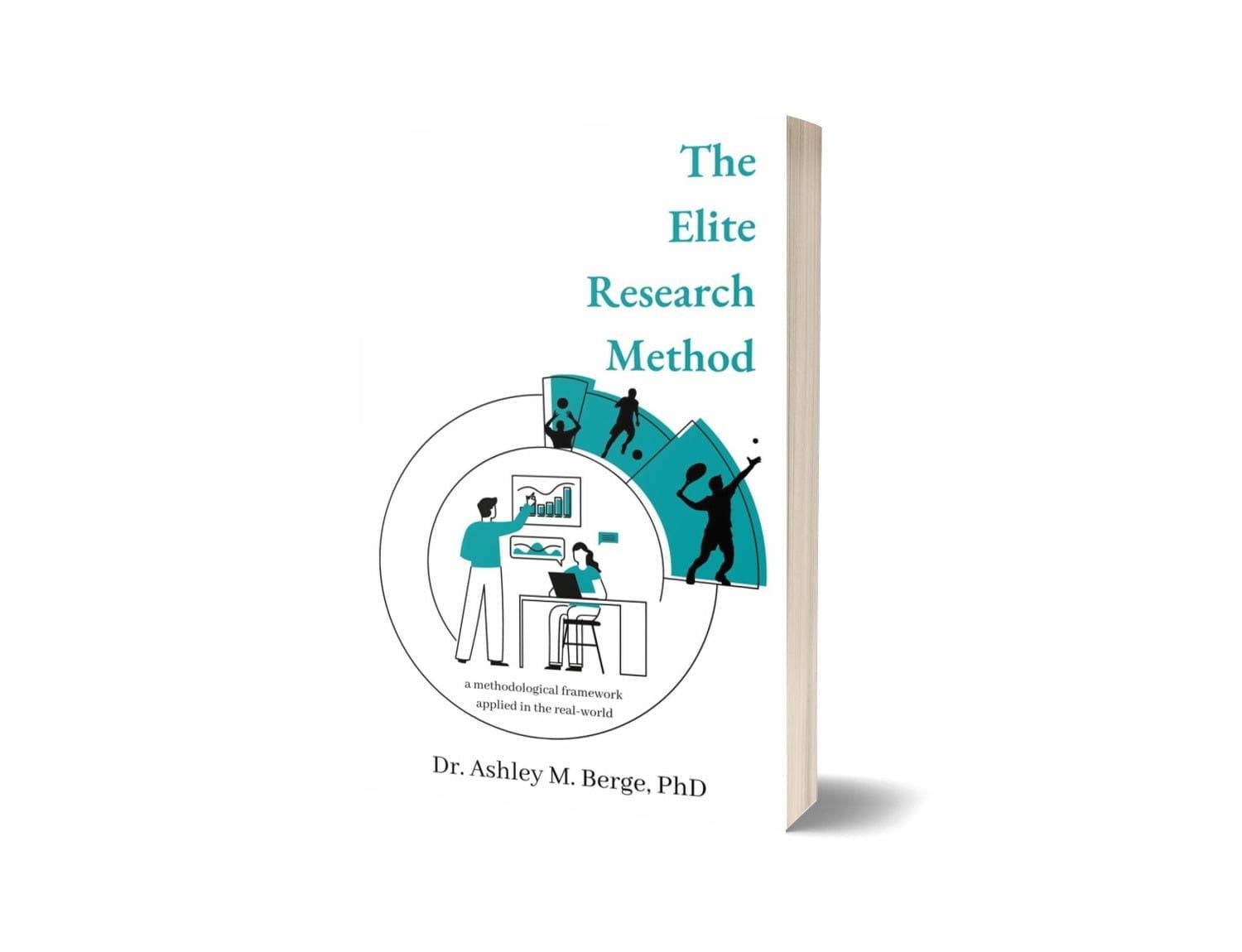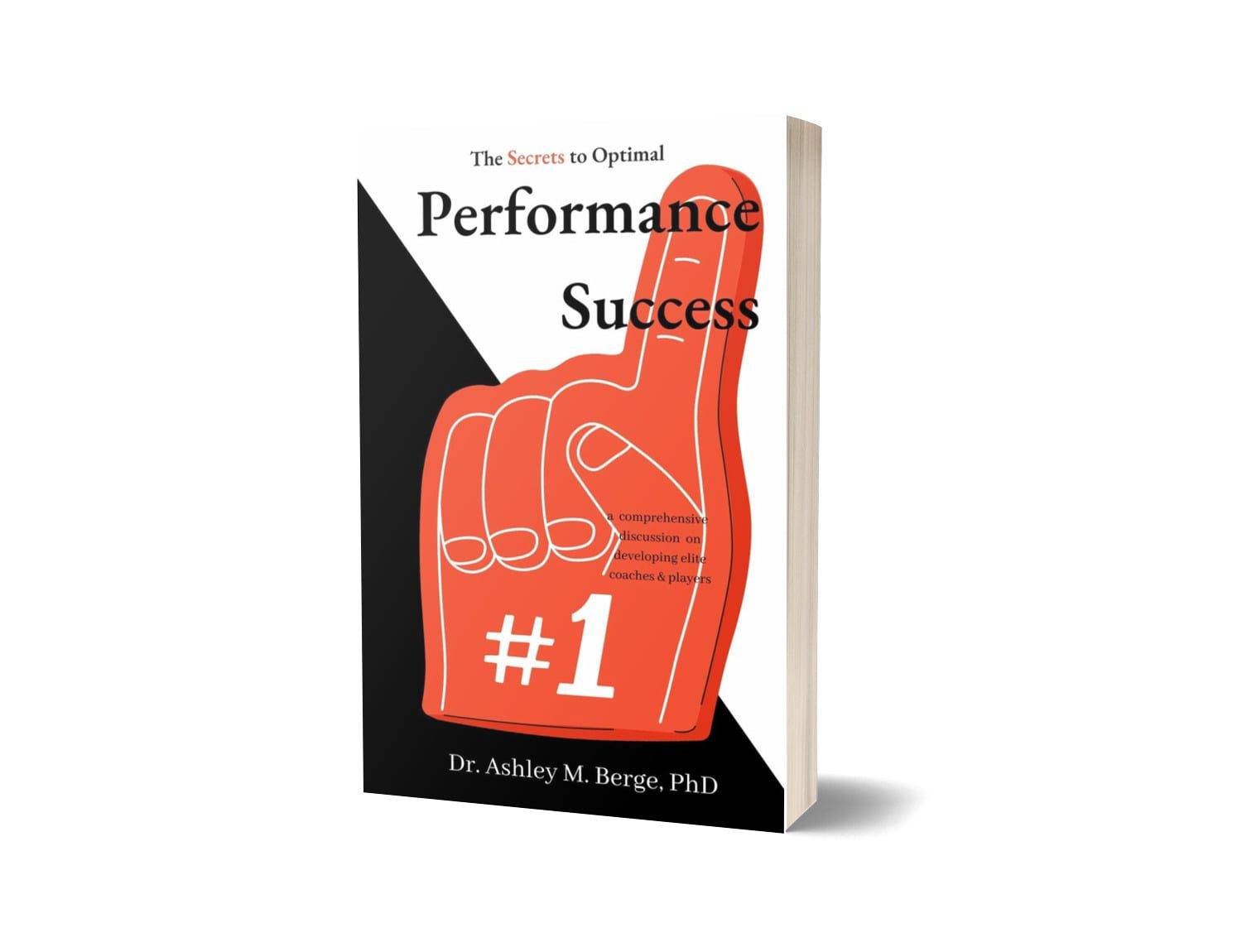
1. Optimal Performance Theory
In this episode, Dr. Ashley M. Berge opens by discussing the Optimal Performance Theory, a coaching methodology she developed through her research and years of elite performance coaching. This theory is rooted in both science and practical application, emphasising that optimal performance in tennis is not just about physical fitness but also about developing the right mental and emotional resilience.
The theory focuses on how athletes can maximize their potential by following specific conditioning routines that are tailored to their individual needs. One core aspect of the theory is the understanding that every athlete is unique, and therefore their path to success must be customized. This involves monitoring their behavior, assessing their physiological responses to stress and pressure, and designing training programs that push them toward long-term success without risking injury or burnout.
Dr. Berge emphasizes that Optimal Performance is a process rather than an immediate outcome. Athletes, coaches, and parents need to invest time in building not just physical strength but also mental fortitude. By doing so, athletes can better cope with the high-pressure environment of professional tennis.
Dr. Berge also mentions several Top 10 ATP and WTA players who have benefited from these tailored strategies, citing examples of players who have consistently maintained a high level of performance due to personalized training plans. She highlights Player A, who has maintained a position in the Top 3 for over a decade, and Player B, who recently broke into the Top 10 with a heavy focus on mental conditioning and match strategy.
2. Strategies for Developing a Top 10 Ranking
One of the primary focuses of this episode is the roadmap to developing a Top 10 tennis ranking. Dr. Berge shares various strategies that she has seen consistently work for her athletes, drawing from her years of experience coaching players across Europe, the U.S., and Australia.
Among these strategies is the necessity of adopting a long-term perspective. Dr. Berge repeatedly underscores that the journey to a top-ranking position is a marathon, not a sprint. The typical training plan she recommends involves a comprehensive approach that includes physical training, mental conditioning, injury prevention, and game strategy development.
Berge also discusses Player C, who currently ranks between 5-10. This player’s success has been largely attributed to early mental conditioning and a tactical focus on adapting their game to various playing surfaces. Dr. Berge emphasizes that these attributes, developed over time, allowed them to break into the Top 10 and sustain their ranking.
Additionally, Dr. Berge highlights Player D, ranked in the Top 5, who exemplifies the integration of both physical endurance and game strategy in achieving consistent success.
3. Injury Mitigation Techniques
A major theme in this episode is injury prevention and how athletes can safeguard their careers. According to Dr. Berge, one of the primary reasons athletes fail to reach their potential, or suffer setbacks along the way, is due to preventable injuries.
The podcast touches on various injury mitigation techniques that can help athletes stay fit and healthy throughout their careers. Preemptive conditioning is a key concept Dr. Berge advocates for. This approach focuses on identifying areas where an athlete is prone to injury and working to strengthen those muscles, tendons, and joints before an injury occurs.
She provides examples of players like Player E, currently ranked in the Top 10, who suffered early setbacks due to injury but have since prioritized preemptive training, ensuring they stay on top of their game and avoid further career disruptions.
Additionally, she emphasizes the need for rest and recovery. Too often, athletes, especially young players, fall into the trap of overtraining. While it may seem like more hours on the court equates to better results, Dr. Berge warns that overtraining can lead to burnout and injury. Instead, she promotes active recovery techniques such as yoga, stretching, and massage therapy as essential tools in keeping an athlete’s body in prime condition.
4. Long-term Athlete Conditioning
Dr. Berge dives into the importance of long-term conditioning for athletes, explaining that success in tennis, particularly at the elite level, requires continuous and careful conditioning of both the body and mind.
This conditioning doesn’t end once a player reaches their peak performance level; it’s something they need to maintain throughout their entire career. For example, Player F, ranked in the Top 3, exemplifies long-term success through consistent conditioning efforts. From early in their career, Player F has adhered to strict routines designed to prevent injury and sustain performance, which Dr. Berge attributes to their sustained presence at the top of the sport.
This long-term conditioning includes strength training, which helps build resilience against injury, and cardiovascular training, which enables players to sustain high energy levels throughout long matches. Dr. Berge also highlights Player G, who has reached the Top 10 and whose success is credited to rigorous physical and mental conditioning, allowing them to perform at peak levels in long, grueling matches.
5. Parental and Coaching Roles in Athlete Development
A significant portion of the episode is dedicated to exploring the roles of parents and coaches in the development of a tennis player. Dr. Berge offers a unique perspective on how these relationships can either help or hinder an athlete’s progress.
She highlights the stories of Player H, who ranks in the Top 5, and whose journey to the top was heavily supported by a positive relationship between their parents and coaches. Dr. Berge uses Player H as a case study to show the importance of having open communication and shared goals between all parties involved in an athlete’s career.
Coaches, on the other hand, must balance being both mentors and strategists. According to Dr. Berge, a coach’s primary role is to cultivate a player’s natural talent while addressing any areas of weakness. Player I, ranked in the Top 10, benefited from having a coach who adapted their playing style over time, gradually shifting from a defensive to an offensive strategy to match their evolving skill set.
6. Sweets and Sport: The Role of Nutrition
A standout section of this episode is Dr. Berge’s discussion on the connection between sweets and performance in sports, a theme she explores in depth. She debunks common myths about sugar consumption and athletic performance, explaining that while sugary foods are often associated with quick energy boosts, they can also lead to energy crashes and poor focus during important matches.
She explains that managing glucose levels during training and matches is critical for sustaining energy and maintaining mental clarity. Players like Player J eventually shifted toward more balanced nutrition, opting for complex carbohydrates and natural sugars from fruits, which provide a steadier source of energy.
Furthermore, Dr. Berge emphasizes that coaches need to educate their athletes on sports nutrition to prevent dependency on unhealthy foods. She shares an example of how athletes who maintain balanced diets, focusing on the right mix of macronutrients, recover faster and perform better under pressure.
Dr. Berge also highlights the psychological impact of sweets. For some athletes, sugary foods serve as a comfort or reward mechanism, especially during stressful periods in their careers. However, she advises against relying on these types of foods for emotional support, as it can lead to unhealthy eating habits that negatively affect performance.
7. Behavioural Conditioning for Optimal Performance
In the latter part of the episode, Dr. Berge shifts her focus to the role of behavioral conditioning in achieving optimal performance. She introduces the concept of habit formation and how creating the right habits off the court can translate to success on the court.
Behavioral conditioning involves instilling discipline in every aspect of an athlete’s life, from how they train to how they manage their time and even how they recover from losses. Dr. Berge emphasizes that players who develop good habits early in their careers are more likely to stay on track and avoid burnout or loss of motivation.
Another key component of behavioral conditioning is learning how to manage emotions under pressure. Tennis is a sport that requires both physical and mental stamina, and athletes often face immense pressure in high-stakes matches. Dr. Berge shares techniques that players like Player K (Top 5) use to stay calm and focused under pressure. Techniques such as deep breathing, positive self-talk, and mindfulness practices help players regain focus and composure, even in the most challenging moments.
8. Data-Driven Insights on Rankings
Throughout the episode, Dr. Berge shares numerous data-driven insights on how the latest rankings reflect player performance. She draws from her research and latest book, “How to Develop a Top 10 Tennis Ranking,” to show how athletes can use data to enhance their training routines.
She cites Player L, currently ranked in the Top 5, as an example of a player who uses match analytics to fine-tune their game. By reviewing key statistics such as serve percentages, unforced errors, and rally lengths, Player L and their team are able to make strategic adjustments that lead to better match outcomes.
Dr. Berge also mentions how performance data helps athletes and their coaches prepare for opponents. Player M, ranked in the Top 10, relies on detailed scouting reports to identify tendencies in their opponents’ play. These reports focus on critical match data—such as their return game, where they tend to serve, and their favorite shots. This data allows Player M to formulate a clear game plan, giving them a strategic edge before stepping on the court.
Closing Thoughts
In the closing moments of the episode, Dr. Berge reiterates that achieving a Top 10 ranking in tennis is about more than just talent—it’s about dedication, hard work, and the right support system. By combining Optimal Performance Theory with personalized strategies, injury prevention techniques, and data-driven insights, athletes can position themselves for long-term success.
Dr. Berge closes with a message for both athletes and their support teams: success is a collaborative effort that requires consistent communication, commitment, and the willingness to adapt as the athlete grows and evolves.
Player Reference
Player M – Top 10 ranking.
Player A – Top 3 ranking.
Player B – Recently broke into the Top 10.
Player C – Top 5-10 ranking.
Player D – Top 5 ranking.
Player E – Top 10 ranking.
Player F – Top 3 ranking.
Player G – Top 10 ranking.
Player H – Top 5 ranking.
Player I – Top 10 ranking.
Player J – Top 10 ranking.
Player K – Top 5 ranking.
Player L – Top 5 ranking.
Note: you just read an automated summary of episode #124 — if you found this helpful and/or pieces were not as accurate as you’d like, please let us know and be mindful that intermittently these automated summaries will be shared for those of you who seek a quick snapshot of our episodes.
To learn more about our data, predictive analytics and how to optimise your own performance, head on over to AM8 International. To learn more about AM8 International check out our selection of Books and/or options to join Dr B’s Pack to gain exclusive access to the best in the world. Not quite ready? Head on over to Beyond Top 10 Tennis for free access to 100+ episodes directly from Dr Berge of what it really takes to win multiple Grand Slams to securing that Top 10 tennis ranking with new episodes each week. More? Join Dr Berge’s Newsletter on Substack, come say “hi” on Topicthread, BlueSky, X, YouTube or Instagram that may very well include quick snippets you can apply in your game, today, or even consider leaving a review on Amazon or Google.
















